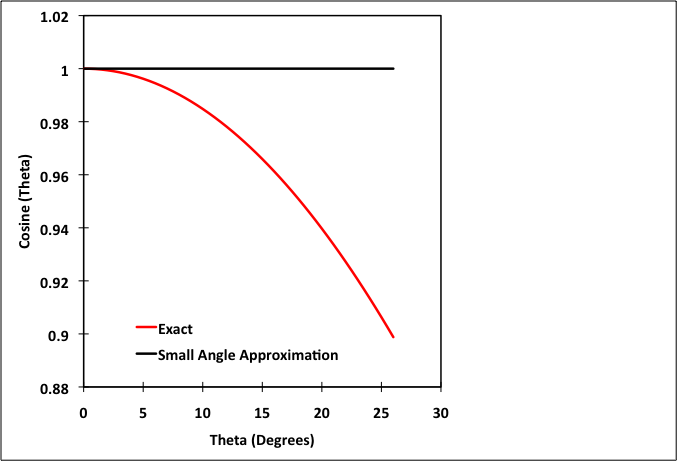 |
||||||||
 |
 |
 |
 |
|||||
 |
||||||||
 |
||||||||
 |
 |
|||||||
 |
||||||||
 |
||||||||
 |
||||||||
 |
||||||||
 |
||||||||
SMALL ANGLE APPROXIMATIONS
The small angle approximations have been identified as being useful tools, but how accurate are they?
Consider a simple frame transformation from cylindrical to Cartesian coordinates
(1)
i
=
cos(θ)er − sin(θ)eθ
j
=
sin(θ)er + cos(θ)eθ
k
=
k
If the small angle approximation is applied, then these equations become
(2)
i
=
1.0er − θeθ
j
=
θer + 1.0eθ
k
=
k
θ should be applied in radians in these equations. Observe the behavior of the approximation as θ increases in Fig. 1↓. It is clear that the cosine approximation generates more error as θ increases than its sine counterpart. The errors ((exact - approximation)/exact × 100%) are shown in Fig. 2↓.
For an engineering tolerance of 4%, the angle θ can go to 25° if only sine functions are modeled, but the error exceeds the tolerance at 15° if cosine functions are approximated. For smaller tolerances, the largest “small” angle reduces.


